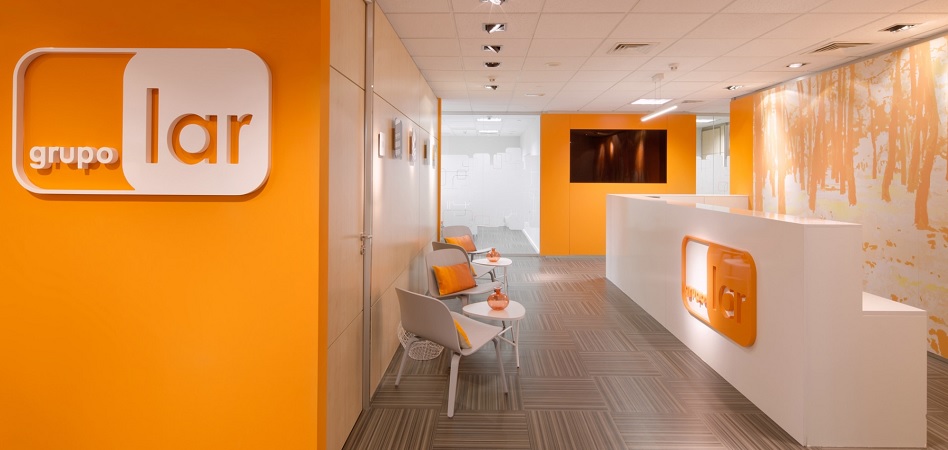RIO DE JANEIRO, BRAZIL – The real estate market is bustling in Brazil. Controlled by domestic companies seeking capitalization, the market is experiencing a fast recovery period after the pandemic.
Amid the activity of domestic building companies and developers, a foreign company has reinforced its position in Brazil, has a land bank worth R$1.5 billion (US$300 million) in potential sales, and expects to launch seven developments this year and next.
Grupo Lar, a 50-year-old Spanish family-owned company, has been in Brazil for ten years. However, for most of its first decade in the country, the developer has focused on the São Paulo countryside, in Jundiaí and in Campinas. In this decade, it launched four developments, with 2,000 units sold.

However, the group spent some idle years here. Like other companies in the sector, it was impacted by the 2014 to 2018 crises. At the time, the operation was adjusted and the company decided not to make any new investments.
The situation changed last year. Guilherme Carlini, until then director of Gafisa, joined the company as the new general director for Brazil and virtually the entire team was changed. The focus has also changed, from the interior of the state to the capital of São Paulo.
The first venture in the city of São Paulo will be launched this weekend. “The strategy is almost entirely different from when we came to São Paulo, a competitive market with the best practices,” says the executive.
With a 30 staff office, the developer buys the land and uses outsourced labor and building companies to erect the building. The company currently has an overall sales value of R$ 1.5 billion expected for land plots.
With an estimated turnover of R$200 million this year, the developer expects to achieve between R$600 and R$800 million in the short term. The plan was to launch approximately six projects this year, a project that was deferred because of the pandemic. The launches should amount to two this year and a further five next year.
In Spain, the group’s native country, the focus is on real estate assets in the logistics and shopping mall sector. Around 50 percent of its turnover comes from Europe and 50 percent from Latin America. With the changes, Brazil became the second most important country for the group, behind only Spain.
The presence of a foreign company in the Brazilian real estate market is uncommon. For Carlini, part of the reason is the insecurity of betting on long-term investments in a volatile market. “It’s a long investment cycle between buying the land and selling the property and the market is still far from a legal certainty that is attractive to the foreign market,” he says.
On the other hand, for Grupo Lar it is an opportunity to achieve higher returns on investment, since the group’s operation in Europe is less focused on the development of new ventures and more on income from renting and using its properties.
European design in Brazil
The group acts on the middle-income segment, with La Vida line, and on the high-income segment, with La Casa line. The La Vida apartments are up to 40 square meters and priced up to R$350,000, near subway and train stations. The La Casa line, on the other hand, consists of two to three-bedroom apartments for families, having between 60 and 90 square meters.
Even before the pandemic, the developer was already considering ways to incorporate personal life and work. A solution was to render the building’s common areas more welcoming and inviting for work or even for a small gathering with friends.
“We don’t build a reception hall to be used only on Friday nights, but rather a space for people to use,” says the director. The common areas, such as the entrance hall and the reception hall, are better connected with each other and furnished with sofas, tables, and chairs, as well as Wi-Fi, to enable working and relaxing moments with friends.
According to Carlini, this kind of environment is now more common in Europe, although still beginning in Brazil. Another European model used in the buildings here is the size of windows. As in Europe, where there is a lower incidence of light, the windows tend to be big – a feature of Grupo Lar’s projects.
Heated sector – and crowded
Grupo Lar is not the only developer or builder to bet on the Brazilian market. There is a line of some 20 companies in the sector going public – São Paulo based building company Mitre made its first IPO in 2020 – and the government launched the new version of the ‘Minha Casa Minha Vida’ (My Home, My Life) program, the ‘Casa Verde e Amarela’ (Green and Yellow House).
In July alone, there was a 58 percent increase in sales of new units compared to the same month last year and launches recorded a 38.2 percent increase. Real estate financing has grown 74,7 percent in August this year compared to last year.
Although the heated up activity in the sector is helping Grupo Lar, it also makes competition more fierce. For Carlini, the challenge from now on will be to find good plots of land for its developments. “The market is much more competitive and with excess liquidity,” says Carlini.
However, he believes competition has a positive aspect. “There is a growing need for governance. I see a much more mature sector, which won’t make the same mistakes of the past.” For the Spanish group’s director, the future lies in the Brazilian market.
Source: Exame

